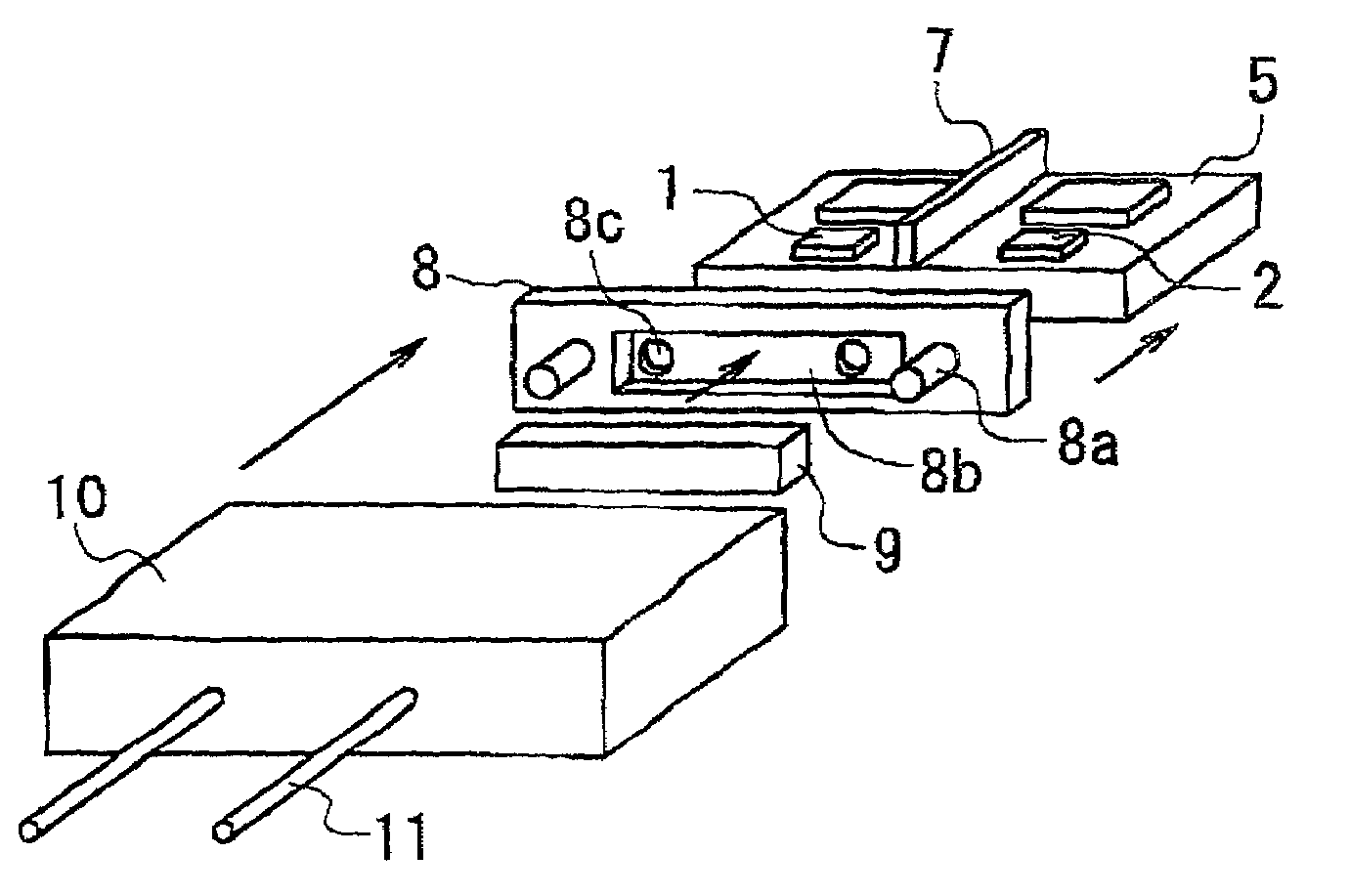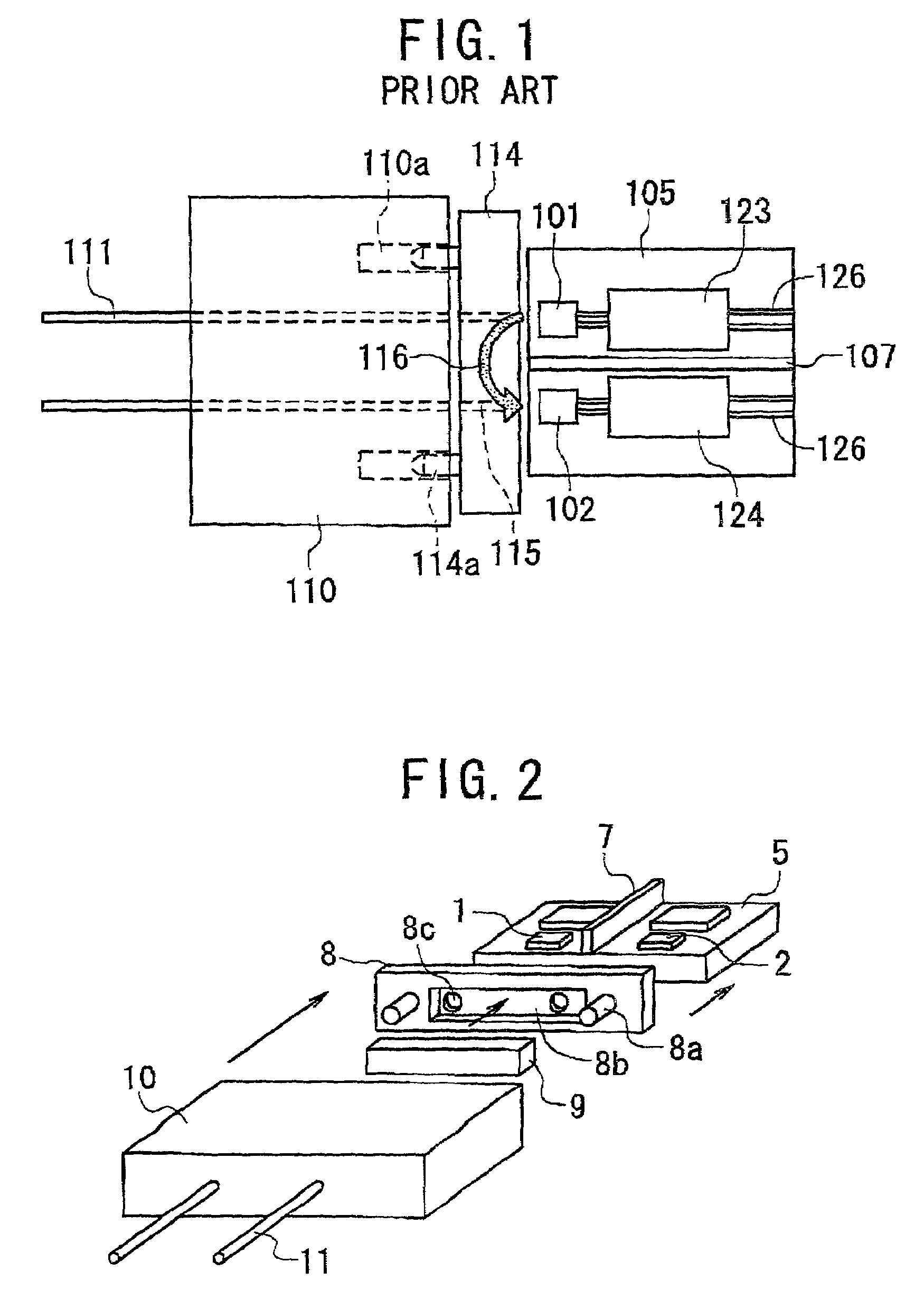Optical transceiver
- Summary
- Abstract
- Description
- Claims
- Application Information
AI Technical Summary
Benefits of technology
Problems solved by technology
Method used
Image
Examples
first embodiment
[0056]An optical transceiver according to a first embodiment of the invention is shown in FIGS. 1 and 2.
[0057]As shown in FIGS. 1 and 2, the transceiver of the first embodiment comprises a rectangular substrate 5, a transmitter section formed on the surface of the substrate 5, and a receiver section formed on the surface of the substrate 5 to be close to the transmitter section. Signal lines 6, power supply lines (not shown), and ground lines (not shown) are formed on the surface of the substrate 5. The signal lines 6 are used for transferring electrical signals to be sent to or from the transmitter section and for transferring electrical signals to be sent to or from the receiver section. The power supply lines are used for supplying a specific power supply voltage to the transmitter and receiver sections. The ground lines are used for electrically grounding the transmitter and receiver sections.
[0058]The transmitter section includes a light-emitting element 1 (e.g., a laser diode)...
second embodiment
[0086]FIGS. 4 and 5 show the configuration of an optical transceiver according to a second embodiment of the invention. This transceiver has the same configuration as the transceiver of the first embodiment of FIGS. 1 and 2, except that a plate-shaped metal-covered glass member 12 is used instead of the plate-shaped metallic member 8, and that a micro-lens pair 13 with a convex micro-lens 13a and a concave micro-lens 13b is used instead of the plate-shaped transparent member 9.
[0087]As shown in FIG. 5, the plate-shaped transparent glass member 12 is formed by a glass plate 12d to which a light-absorbing additive is added, and a plated metal film 12e covering the whole surface of the plate 12d. On the flat front face of the member 12, a rectangular recess 12b is formed in such a way as to receive the micro-lens pair 13. The recess 12b is substantially the same as the recess 8b of the member 8 in the first embodiment. The micro-lens pair 13 is fittingly inserted into the recess 12b an...
PUM
 Login to view more
Login to view more Abstract
Description
Claims
Application Information
 Login to view more
Login to view more - R&D Engineer
- R&D Manager
- IP Professional
- Industry Leading Data Capabilities
- Powerful AI technology
- Patent DNA Extraction
Browse by: Latest US Patents, China's latest patents, Technical Efficacy Thesaurus, Application Domain, Technology Topic.
© 2024 PatSnap. All rights reserved.Legal|Privacy policy|Modern Slavery Act Transparency Statement|Sitemap



